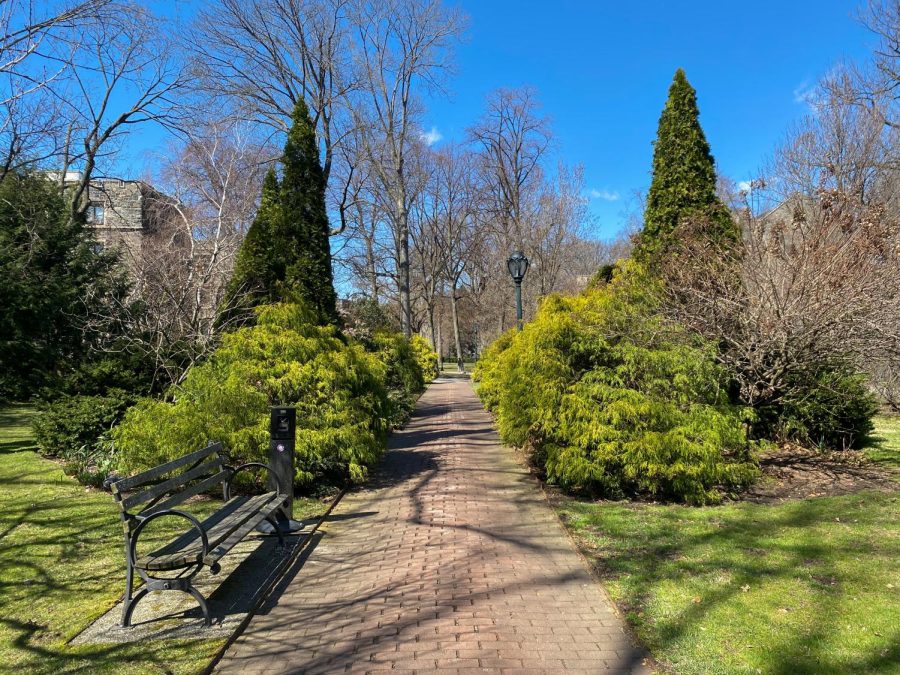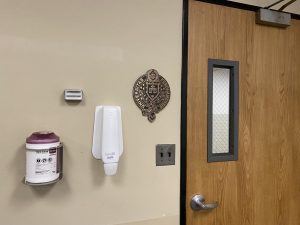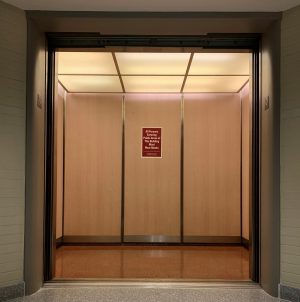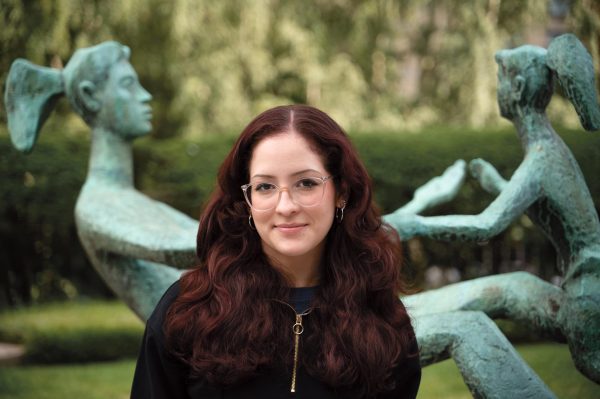Fordham Recognized for Environmental Impact
The trees and greenery across the university’s campuses serve as an opportunity for academic research
Fordham has received an award for its maintenance of the trees on its campuses.
March 21, 2022
The Arbor Day Foundation honored Fordham for its protection, preservation and continued tree conservation efforts across its three campuses for the fifth year since 2015. The foundation’s Tree Campus Higher Education program recognizes colleges across the nation that show a commitment to the environment and dedication to students.
Fordham joined Tree Campus Higher Education in 2015, a program created by the Arbor Day Foundation in 2008 to help recognize the efforts of different universities across the U.S. in their promotion of tree conservation. The university’s “Tree Care Plan,” an annual report that outlines the anticipated care of on-campus greenery, notes Fordham’s aim to inspire learning, build community and become a more sustainable institution.
In addition to protecting its tree population, which involves integrated pest management and a contracted arborist, the tree care plan also intends to engage students with the natural environment available across the campuses. In order to participate in the Tree Campus Higher Education program and to achieve these goals, the university has installed an official Tree Advisory Committee.
The university sets aside approximately $75,000 out of its $562,000 annual greenery maintenance budget for tree care.
Marco Valera, vice president of administration and member of the Tree Advisory Committee, explained that the purpose of the committee is to oversee the university’s tree care efforts.
According to Valera’s office, the university sets aside approximately $75,000 out of its $562,000 annual greenery maintenance budget for tree care. The breakdown of the total budget includes tree purchases, labor and equipment for planting and watering different parts of campus, maintenance of grass and lawns, and other expenses.
The university’s contracted arborist conducts an annual inspection of all trees across the three campuses and the use of integrated pest management. Valera pointed to the maintenance of a variety of tree species native to America, the oldest of which is a nearly 300-year-old west elm oak tree at Rose Hill. Valera added that there are over 500 birchwood trees that belong to the Fordham Rose Hill campus alone.
The Louis Calder Center, Fordham’s biological field station located in Armonk, New York, is another location where students and researchers within the biological sciences department can engage with trees. The department of biological sciences works directly with trees in the 113-acre site, a natural forest preserve that does not need tree care.
The Calder Center offers programs for graduate and undergraduate students, with some online options. A few of the undergraduate student projects available online include studies of tree diversity and landscape ecology.
J.D. Lewis, a professor in the department of biological sciences, said that at the Rose Hill campus, trees are used to learn about biodiversity.
“I continue to use the trees for my non-majors classes, as a way of introducing students to the wide range of species we have here.” J.D.Lewis, biological sciences professor
“When (the course) Plant Biology was offered, we used the trees at Rose Hill for learning species identifications,” Lewis said. “I continue to use the trees for my non-majors classes, as a way of introducing students to the wide range of species we have here.”
They added that because of the campus’ diversity of bird and insect species, trees become a foundation for biodiversity since animals rely on trees for food and shelter.
Valera noted that he believes Fordham’s investments in trees, while modest, is of interest to students because trees engage students with the campus, absorb carbon and provide a micro-environment in the fully developed area of the Bronx.
Valera added that while Fordham hasn’t tried to measure its trees’ carbon absorption, the university “realizes it’s a significant amount.”
“The plaza area at Lincoln Center is quite the perfect place to rest your eyes from the concrete jungle our school is in.” Ryan Chen, FCLC ’24
Ryan Chen, Fordham College at Lincoln Center ’24, is an environmental science student who believes it’s important for schools to provide access to nature. He said these areas strengthen the mental health and well-being of students.
“With the stress and pressure of doing well in school, students need that freshness of trees and flora to regain their strength,” said Chen.
It is essential for people to connect with nature through engaging with green spaces, according to Chen. He pointed to Fordham’s Lincoln Center as an example of accessing these areas in urban locations like Manhattan.
“The plaza area at Lincoln Center is quite the perfect place to rest your eyes from the concrete jungle our school is in,” Chen explained.
Jason Munshi-South, an associate professor in the department of biological sciences at the Calder Center, said that he is working with the United Student Governments at Rose Hill and Lincoln Center to cultivate the food gardens across both campuses. The goal of the project is to develop the use of native plants, which will improve landscaping and increase sustainability.
“(Native plants) store more carbon in their root systems, don’t require fertilizer or watering, and sustain populations of native pollinators,” Munshi-South said. “They are also just as beautiful as the typical nonnative plants.”
The university’s environmental studies program also interacts with both the Lincoln Center food garden, located on the plaza by the McMahon entrance, and Rose Hill’s St. Rose’s food garden, located by the Ram Van office.
According to John van Buren, director of the environmental studies department, the Introduction to Environmental Studies classes at Fordham use the campus’ organic food gardens as “a practicum for students.”
“Because the trees are so visually present in the landscape, they provide, for example, a nice steppingstone for discussing the broader plant diversity on campus.” J.D. Lewis
Fordham also partners with the New York Botanical Gardens, allowing students free access to the garden’s grounds in exchange for visitor access to the university’s parking.
According to Steven Franks, the department chair and a professor in the biological sciences department, graduate students can take courses at the gardens. He said several of his students have conducted research at the grounds. Undergraduate lab groups also visit the gardens.
For Lewis, this engagement with the environment elevates the learning experience for students. For their Honors Interdisciplinary STEM II class, Lewis asks students to observe species and leaf morphology in local ecosystems such as the Rose Hill campus. While Lewis conducts their research at the Calder Center, they point to trees on campus as an opportunity for non-major students to explore what the microenvironment has to offer.
“Because the trees are so visually present in the landscape, they provide, for example, a nice steppingstone for discussing the broader plant diversity on campus,” Lewis said.














